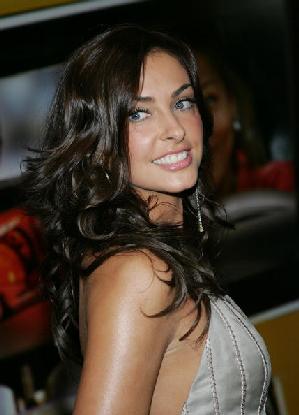Never, that I can recall, was Thomas placed under a shroud of suspicion because of his exploits on the baseball diamond. Never do I remember his name being bantied about as a possible user of performance enhancing drugs. I don't recall seeing him raising his right hand in testimony on Capitol Hill. And I certainly don't remember him beginning his career with a David Banner-like physique and ending it with that of the Incredible Hulk.
Thomas, who hit his 500th career homerun last night, should breeze through Hall of Fame ballotting, unlike some of his contemporaries, whose numbers and change in body structure have most sensible people looking at them cross-eyed.
 Thomas watches #500 fly in the Metrodome
Thomas watches #500 fly in the Metrodome"The Big Hurt," they call him, and it's because of the pain he inflicts on opposing pitchers, not on the game itself. Frank Thomas was jobbed of the Comeback Player of the Year Award in 2006 (he won it in 2000), a slight that I still can't understand. He went from 105 AB (and 12 HR) with the White Sox in 2005 to 39 HR, 114 RBI with the A's last season, in under 500 AB. His departure from the White Sox was contentious, which was something else I never understood, because all Thomas did was give that franchise 16 glorious seasons -- the last two of which were injury-ravaged. He, more than anyone, put the White Sox back on the radar after years of mediocrity in the 1970s and '80s.
He was, dare I say, the most feared righthanded hitter in the big leagues for most of the 1990s. And even now, at age 39, he's not someone I relish seeing come to the plate against my team. Yes, last year's ALCS against the Tigers was brutal for Thomas. And Tigers fans should thank their lucky stars that his slump coincided with that series. But you know what? Even though he struggled mightily against the Tigers last October, I always felt like the next at-bat would be the one where he'd break out of it and make us all pay.
There's no question that Thomas's career was lengthened -- and even saved -- by the designated hitter rule. He will go down with Edgar Martinez as two of the greatest DHs of all time. How much that matters to you is your business. I'm not a DH fan, but if it's there, you may as well have people who can do it properly.
Funny, but Thomas was ejected in the ninth inning last night, after disputing a called third strike.
"I'm probably the only one to hit his 500th homer and get ejected," Thomas said afterward.
I can think of hundreds of pitchers who wish they had that power.
Frank Thomas has hit 500 homeruns -- and counting. Every one of them, I believe, was smacked and pummeled out of big league ballparks without the benefit of foreign substances introduced into his bloodstream, or spread onto his skin.
"This means a lot to me because I did it the right way and I've busted my butt since college. I always worked hard in that weight room to be strong. I'm a big guy and I've been blessed with this talent," Thomas said of his accomplishment.
Hall of Fame, indeed.








































